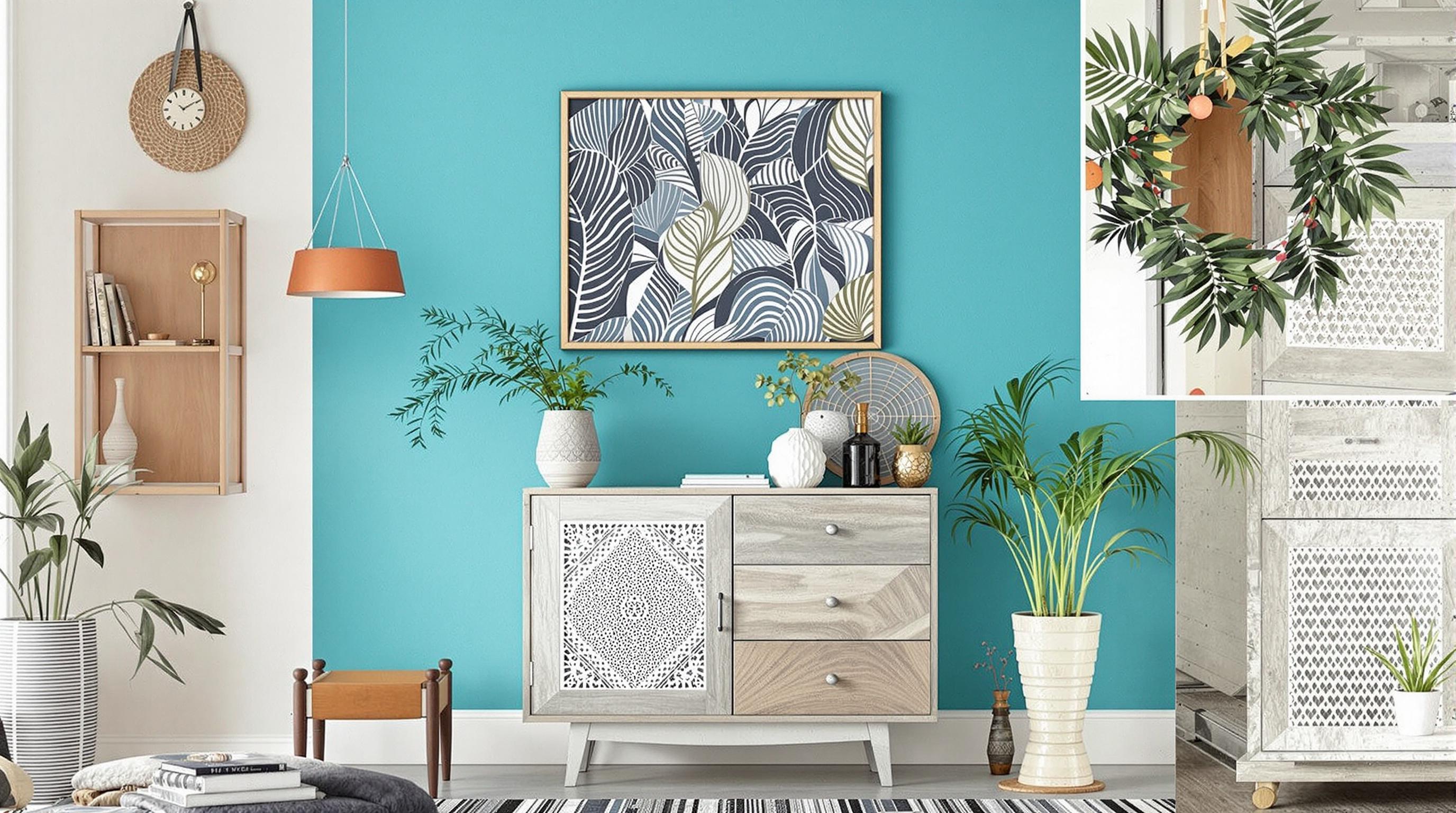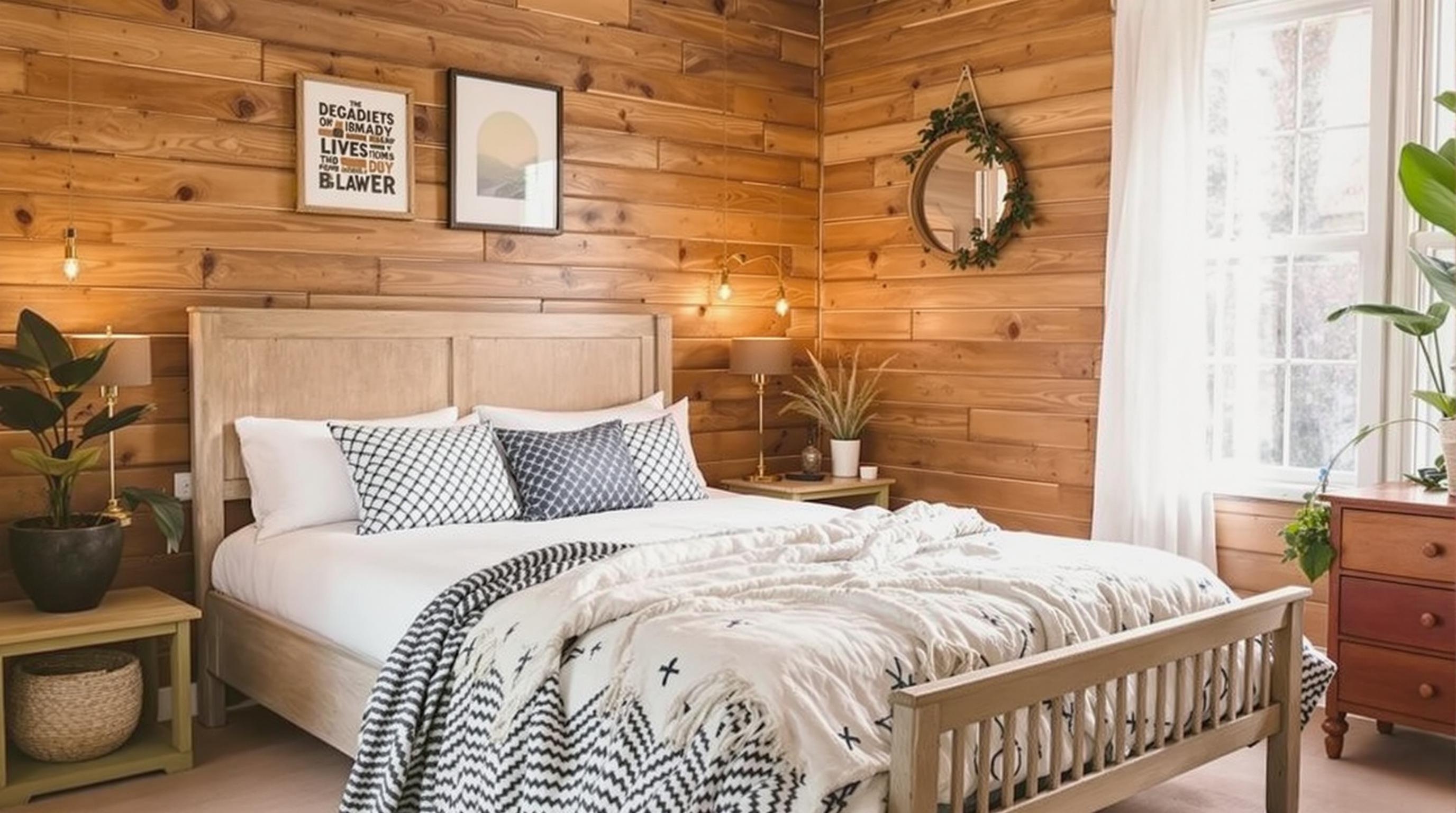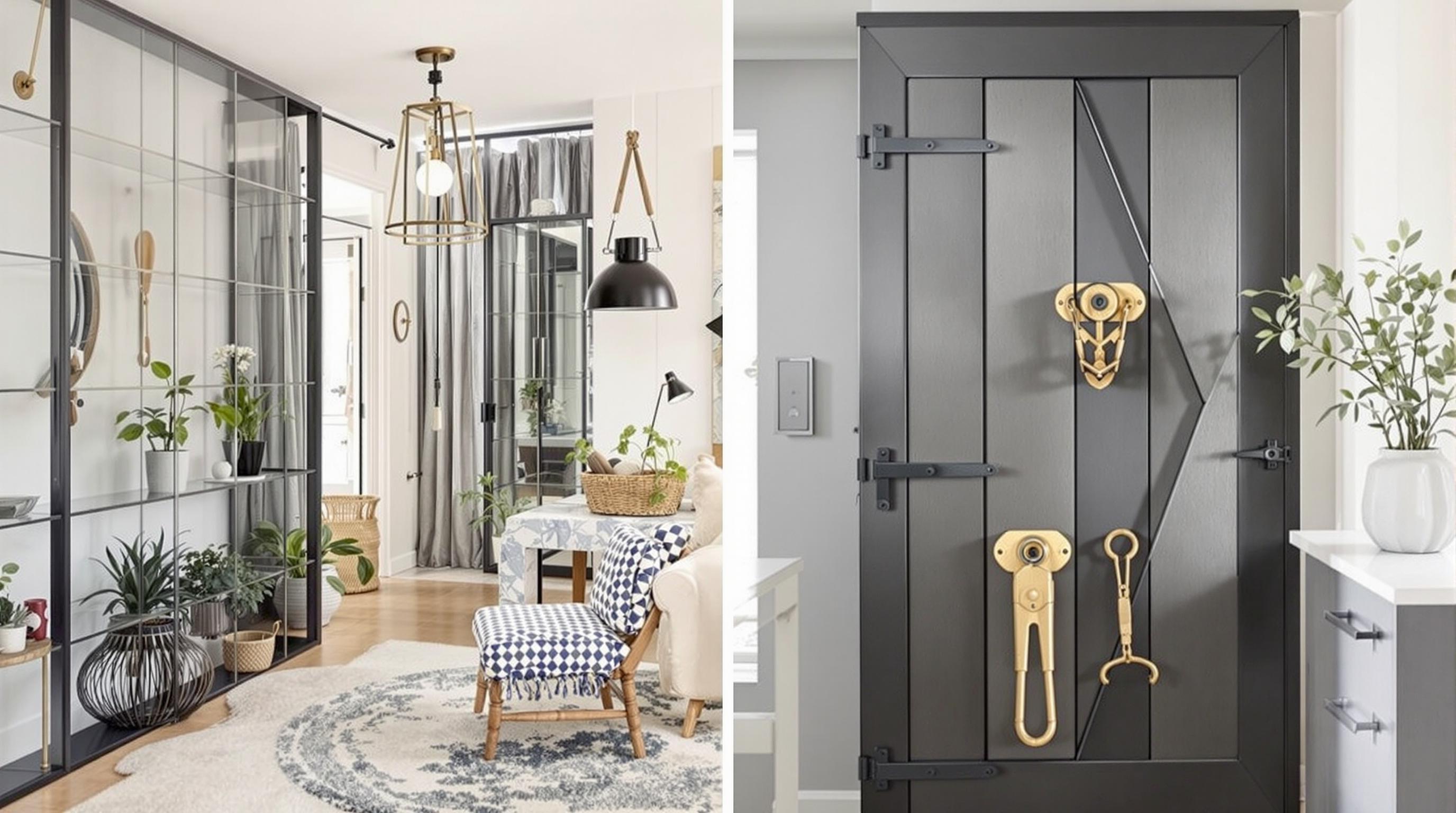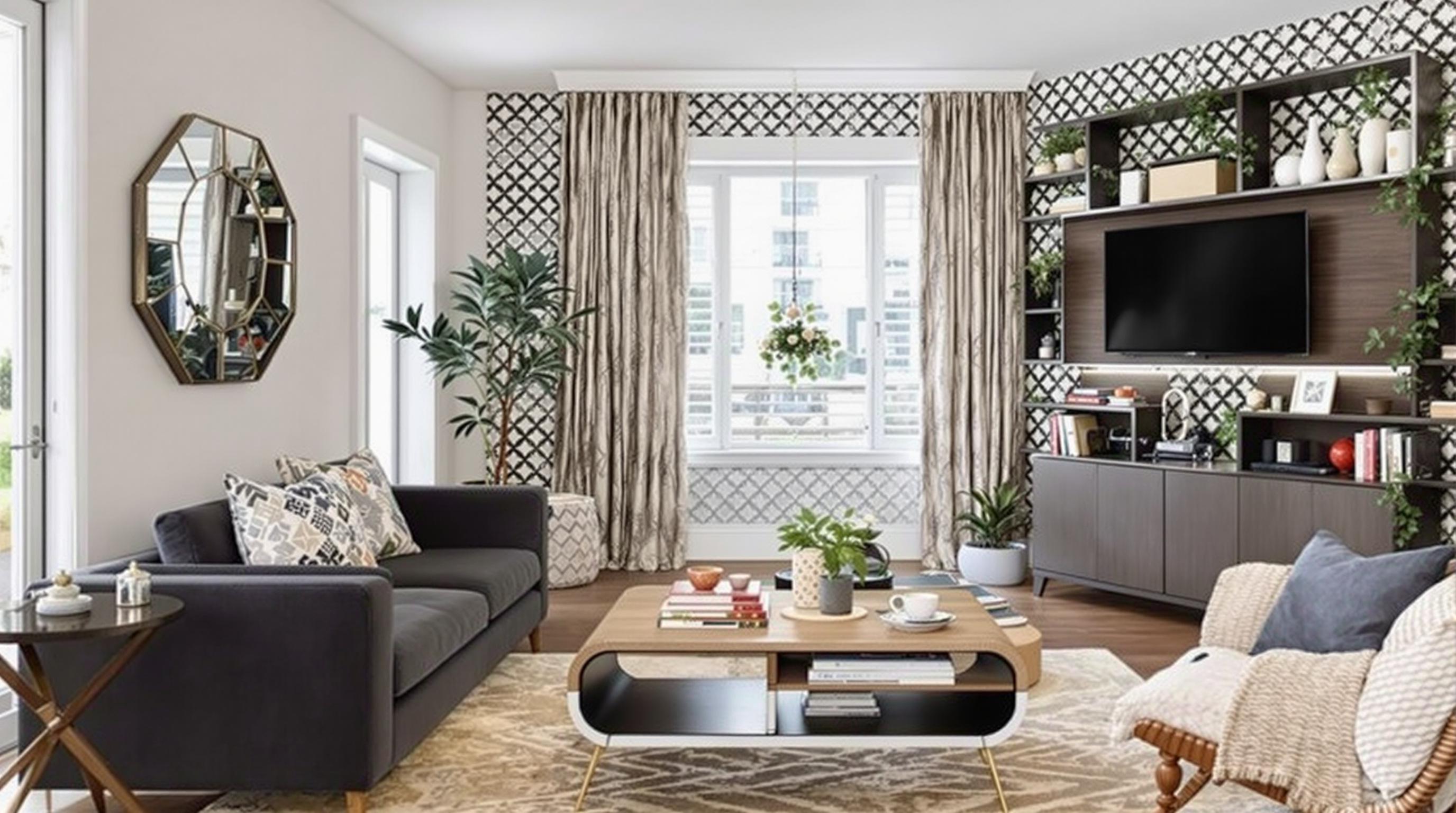Related Articles
- The Hidden Influence of Ergonomics: How Tool Design Shapes Our Physical Spaces and Daily Lives
- The Silent Influence: How Hidden Home Implements Shape Our Daily Routines and Spaces
- The Counterintuitive Role of Chaos: How Messy Tool Storage Can Lead to Unexpected Home Innovations
- Exploring the Unseen: How Audio Experiences Shape the Art of Domestic Spaces and Color Perception
- Rethinking the Mundane: How Everyday Objects are Becoming the Canvas for Modern Artistic Expression in Home Spaces
- Cultivating Chaos: The Surprising Benefits of Embracing Weeds in Your Garden Ecosystem
9 Creative DIY Renovation Secrets: Transform Your Space with Minimal Effort and Maximum Impact
9 Creative DIY Renovation Secrets: Transform Your Space with Minimal Effort and Maximum Impact
9 Creative DIY Renovation Secrets: Transform Your Space with Minimal Effort and Maximum Impact
1. Embrace a Fresh Coat of Paint
One of the simplest yet most transformative ways to revitalize any space is through a fresh coat of paint. Whether you're looking to change the mood of a room or to bring new life to tired walls, colors can significantly impact our emotions and perceptions. Choosing light, airy colors like pastels and whites can make a space feel larger and more inviting, while deeper hues create warmth and intimacy.
When selecting paint, consider using high-quality, washable options that can withstand wear and tear. Additionally, don't shy away from bold accent walls as they can add excitement and depth without overpowering the room. Using painter’s tape to create geometric shapes can add a creative twist that even non-artists can manage.
With just a few hours and a little effort, you can completely alter the vibe of a room—making this a stylish yet effective renovation secret. The investment in paint is minimal compared to the impact it offers, proving transformative without emptying your wallet (source: Bob Vila).
2. Revitalize With Strategic Lighting
Lighting is often overlooked but plays a crucial role in how we perceive spaces. Updating light fixtures or adding new lamps can dramatically change a room’s ambiance. Consider swapping out ordinary ceiling fixtures for statement pieces that reflect your style, such as a modern chandelier or classic pendant lights.
Layering your lighting—utilizing ambient, task, and accent lights—also maximizes creativity and comfort. For instance, adding floor lamps in darker corners not only brightens the room but can also complement your decor. Additionally, dimmer switches can help create mood and control natural lighting throughout the day.
Effective lighting can produce a sleek, polished look with minimal effort, enhancing your home’s desirability and providing an atmosphere that encourages relaxation and joy (source: Architectural Digest).
3. Rearrange Your Furniture For Flow
Never underestimate the power of furniture arrangement. Slight shifts in furniture placement can open a room up, creating better flow and interaction. Consider the purpose of the space: Does the layout encourage conversation in your living room, or does it invite movement in a crowded hallway?
Experimenting with different layouts allows you to discover new ways to utilize your space effectively. The classic 'floating furniture' technique—moving pieces away from walls—can create a more intimate setting and make a room feel cozier and more inviting.
Remember, this method requires no spending or extensive labor—just creativity and a willingness to re-envision your surroundings. A refreshed arrangement can lead to new energy in a familiar space, demonstrating how interpersonal dynamics can be modified in tangible ways (source: Better Homes & Gardens).
4. Add Greenery for Natural Vibes
Incorporating plants into your home decor is an effective way to enhance both aesthetics and air quality. Whether you opt for small succulents or large statement plants like fiddle leaf figs, greenery brings life and vibrancy to spaces. Plants can also improve your mood and productivity, providing a natural antidote to stress.
Creating a 'plant corner' or using plant hangers can display your green friends creatively. If you’re worried about maintenance, choose low-maintenance options like snake plants or pothos, which are forgiving of neglect. The mere presence of plants can create a calming atmosphere, reminiscent of the natural environment.
Even adding fresh herbs to your kitchen window can beautify the space while offering the practical benefit of accessibility while cooking. This simple yet effective touch highlights the often-overlooked impact of adding living elements to indoor spaces (source: The Spruce).
5. Utilize Mirrors to Create Illusion
Mirrors are a powerful tool in small spaces; they reflect light and can give the illusion of a larger room. Strategically placing mirrors opposite windows allows natural light to bounce around the space, brightening dark corners and making tight quarters feel airy.
Additionally, mirrors can serve as decorative elements that enhance existing styles. A vintage, ornate mirror can add charm, while sleek, modern designs contrast nicely with minimalistic decor. Experimenting with different shapes and sizes can create interesting focal points.
The investment in a few well-placed mirrors can transform the perception of your home while providing functionality and style, making it a savvy renovation choice (source: House Beautiful).
6. DIY Artwork and Personal Touches
Personalizing your space doesn’t have to mean costly art pieces. Creating your artwork or displaying personal photographs can make a room feel more connected to your identity. Use canvases, wood, or even fabric, and let your creativity run wild with paints or mixed media.
Consider creating a gallery wall that displays various art forms from your travels, family, or inspirations. This gives the space character and depth—each piece tells a story or elicits memories that ignite conversation among guests.
Creating your pieces can also instill a sense of pride in your space, proving that your home is a reflection of who you are and what matters to you. It's a fabulous DIY project that’s approachable for individuals of all artistic levels (source: Artful Living).
7. Update Hardware for Instant Modernization
Updating hardware, such as cabinet handles and knobs, can have an immediate impact on your home's aesthetic. Replacing old hardware with modern designs can revitalise kitchens and bathrooms at minimal expense. Popular trends currently include brass, matte black, and unique vintage options that significantly change the feeling of a room.
This simple change requires little more than a screwdriver, making it an accessible, weekend DIY project. Consider the overall style of your home to achieve a cohesive look—mixing and matching can work but may require a careful hand to ensure harmony.
This single upgrade can alter the visual appeal of your cabinets or furniture, transforming them from ordinary to extraordinary. The relatively small cost and effort involved in updating hardware greatly outweigh the impact on your space (source: HGTV).
8. Create Multi-functional Spaces
As homes become busier and the need for versatile spaces increases, transforming a single-purpose room into a multi-functional one can provide practical solutions. For instance, a guest bedroom can double as a home office with the right furniture arrangement and storage systems.
Incorporating foldable tables or Murphy beds are both space-savvy and trendy options that optimize function without sacrificing style. Use stylish storage solutions, such as decorative bins, to maintain organization and reduce clutter.
This approach to renovation promotes efficiency and acknowledges the demands of modern living while creating a dynamic environment. The beauty of adaptability lies in how it reflects the varying needs of inhabitants over time (source: The New York Times).
9. Integrate Textiles to Enhance Comfort
Textiles profoundly affect the warmth and comfort of a space. Incorporating soft throws, decorative pillows, and area rugs can create a cozy atmosphere that invites relaxation and nourishes mental health. Layering these textiles adds depth and richness to decor, inviting guests to feel at home.
Your choice of textiles can also serve as an opportunity to experiment with color, texture, and pattern—enriching your space in a meaningful way. Opting for eco-friendly materials like organic cotton or sustainable textiles not only enhances aesthetics but aligns with the values of social consciousness.
This foundational element in home décor is easily updated with seasons or trends, allowing for the personalization of your space with minimal effort. The tactile experience of textiles can transform cold, sterile rooms into warm, welcoming areas that foster connection and comfort (source: Elle Decor).





